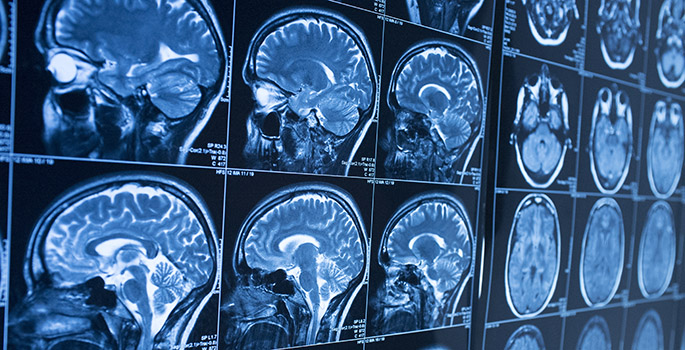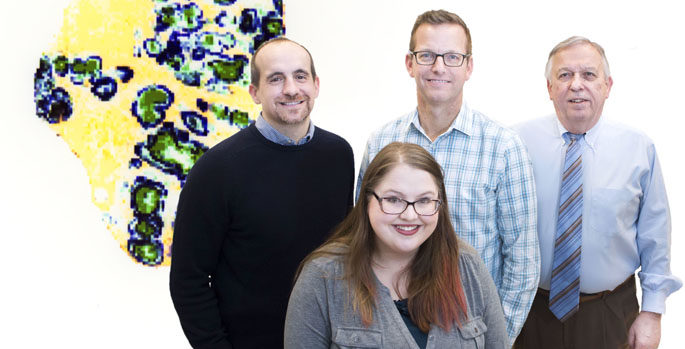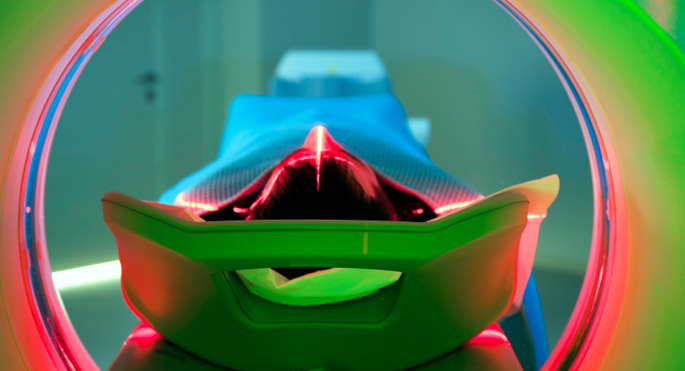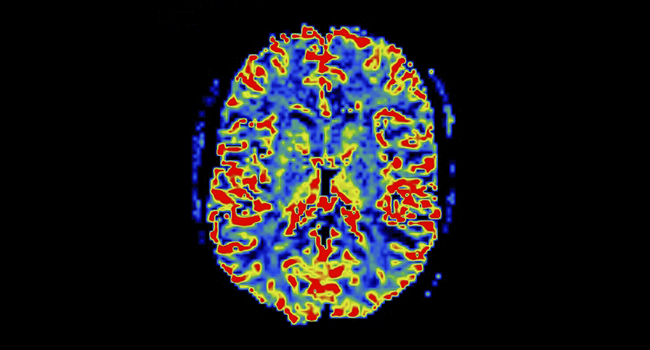Vanderbilt University Institute Of Imaging Science
-

Automated tool can link brain scans to cognitive deficits in people with neurofibromatosis 1
Researchers in the labs of Laurie Cutting and Bennett Landman recently published a study in Magnetic Resonance Imaging exploring a new tool for imaging the brains of neurofibromatosis type 1 patients and its significance in assessing their symptoms. Read MoreMar 14, 2023
-

PET imaging probe for Alzheimer’s disease
Vanderbilt researchers report on a new PET imaging probe that will be useful for exploring Alzheimer’s disease pathology. Read MoreFeb 24, 2022
-

Imaging guidance for nerve repair
A noninvasive, quantitative MRI method could be used after surgical repair of traumatic peripheral nerve injury to help clinicians make decisions about whether additional surgical interventions are needed. Read MoreFeb 9, 2021
-

Imaging brain’s white matter is predictive “biomarker” for Alzheimer’s disease progression
Measuring changes in functional connectivity of the brain’s white matter, which is made up of nerve fibers and their protective myelin coating, can predict Alzheimer’s disease progression, researchers in the Vanderbilt University Institute of Imaging Science have found. Previous studies have correlated variations in blood oxygenation level dependent (BOLD) signals detected by functional magnetic resonance... Read MoreNov 20, 2020
-

Imaging “biomarker” for Alzheimer’s disease progression
Changes in connectivity in the brain’s white matter may be a novel neuroimaging biomarker for assessing Alzheimer’s disease progression. Read MoreNov 16, 2020
-

Grissom awarded $1.4 million NIH grant to develop smaller, quieter MRI system
Vanderbilt engineers have received a $1.4 million NIH grant to work toward a compact, silent, less expensive and potentially portable MRI device. Read MoreSep 1, 2020
-

Blocking tumor ‘signals’ and ‘fuel’
Combining two drugs reduced colorectal cancer cell growth in vitro and in an animal model, suggesting the combination may be a promising treatment for patients. Read MoreAug 25, 2020
-

Imaging breast cancer cell size
A noninvasive MRI approach assesses breast tumor cell size and could be a useful way to evaluate early response to neoadjuvant therapy. Read MoreFeb 10, 2020
-

Imaging nerve regeneration
Diffusion MRI may provide a noninvasive approach to assess nerve regeneration and distinguish successful from unsuccessful repairs earlier. Read MoreJan 28, 2020
-

Gore named to committee on worker health overseas
John Gore, director of the Vanderbilt University Institute of Imaging Science, has been appointed to a National Academies of Sciences, Engineering and Medicine standing committee to advise the Department of State on unexplained health effects on U.S. government employees and their families at overseas embassies. Read MoreDec 12, 2019
-

The Art of Imaging: VUIIS, Fine Arts Gallery bridge science and art to create 3D artifacts
Anna Fisher, a certified nuclear medicine technologist, scans an ancient stamp using the PET/CT scanner. Photo courtesy Vanderbilt Fine Arts Gallery When the Vanderbilt University Institute of Imaging Science installed a new state-of-the-art PET/CT scanner in early 2018, the team probably never imagined it would be used for an art… Read MoreAug 20, 2019
-

Kidney disease imaging
Making multiple measurements with MRI can provide comprehensive information about the molecular and cellular changes caused by kidney injury. Read MoreMar 22, 2018
-

New imaging approach offers unprecedented views of staph infection
A new integrated imaging approach makes it possible to probe the molecules involved in invasive infections and can be broadly applied to any health or disease state. Read MoreMar 15, 2018
-

Predicting brain surgery outcomes
Assessing brain functional and structural connectivity in patients with temporal lobe epilepsy may be a useful way to identify the best candidates for surgical treatment. Read MoreAug 18, 2017
-

PET imaging to predict tumor response
A PET probe that detects the amino acid glutamine predicts whether tumors respond to certain targeted therapies in preclinical animal models. Read MoreJun 14, 2017
-

Abramson to lead new Department of Radiology innovation program
Richard Abramson, M.D., will engage in creative program development as the Department of Radiology’s first Vice Chair for Innovation. Read MoreApr 27, 2017
-

Using MRI to assess myelin health
Vanderbilt investigators report an improved model for estimating brain health, using MRI. Read MoreJan 25, 2016
-

A view of brain function in disease
Vanderbilt investigators report the first use of a specialized type of MRI to study the hippocampus in patients with schizophrenia. Read MoreJun 16, 2015
-

Study reveals biomarker of post-injury spinal cord function
Vanderbilt University researchers have demonstrated, for the first time in a primate model, that injury disrupts neural signaling in the spinal cord and that these changes can be measured non-invasively with functional magnetic resonance imaging (fMRI). Read MoreApr 23, 2015
-

Physician-scientist is dream job for Vanderbilt’s Cassat
Jim Cassat, M.D., Ph.D., a pediatric infectious disease specialist who joined the Vanderbilt faculty this summer, loves taking care of children with bone infections and doing research to understand the host-pathogen interactions during these invasive infections. Read MoreDec 4, 2014